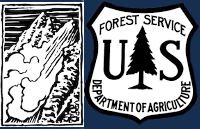Lionhead Range
This wet loose avalanche is a great example of where they often occur. Rocks absorb extra heat from the sun and can quickly melt and destabilize the snow. Either move under areas like this early in the morning (as we did), or if you have to travel under them later in the day, move quickly.
Example of wet loose avalanche
This wet loose avalanche is a great example of where they often occur. Rocks absorb extra heat from the sun and can quickly melt and destabilize the snow. Either move under areas like this early in the morning (as we did), or if you have to travel under them later in the day, move quickly.
Good Stability at Lionhead
We rode up to the old weather station and then to the current weather station, down Airplane Bowl, along the base of the LH Ridge to the head of Targhee Creek and back. There is a 4-5" Thick refrozen crust below 3-5 inches of new snow at upper elevations. At lower elevations, there was less snow, and I suspect more rain, and east winds stripped many of the upper starting zones back down to the melt-freeze crust.
There was little, if any danger of avalanches today. You may have been able to find an isolated wind slab from the east wind-loading, but it would have been small in area and depth. We rode out at 2 PM and the crust had not started breaking down in any meaningful way.
Tomorrow is supposed to be 8-10 degrees F warmer, but cold temperatures tonight should refreeze the crust, and it is pretty robust. There may be a few very small, wet snow avalanches in the recent snow with warming temperatures, but I would not be particularly worried about slides. There is more snow and colder temps forecast for Sunday and Monday. Fingers crossed for a bit more powder riding.
The road from the Buttermilk TH was reasonable but is melting out quickly. There were a few dirt patches that will grow tomorrow.
Beautiful day to spend in the mountains and the riding through the upper bowls was quite nice.
Understanding Avalanche Safety Preparedness – 5-Minute Survey for Motorized Users
We need your input! Eastern Oregon University is conducting a survey to better understand avalanche safety preparedness among motorized backcountry users like you. Your feedback will help us learn more about who is purchasing and practicing with avalanche rescue gear (beacon, probe, shovel) and participating in avalanche education—and why some riders aren’t. The survey is confidential and anonymous.
